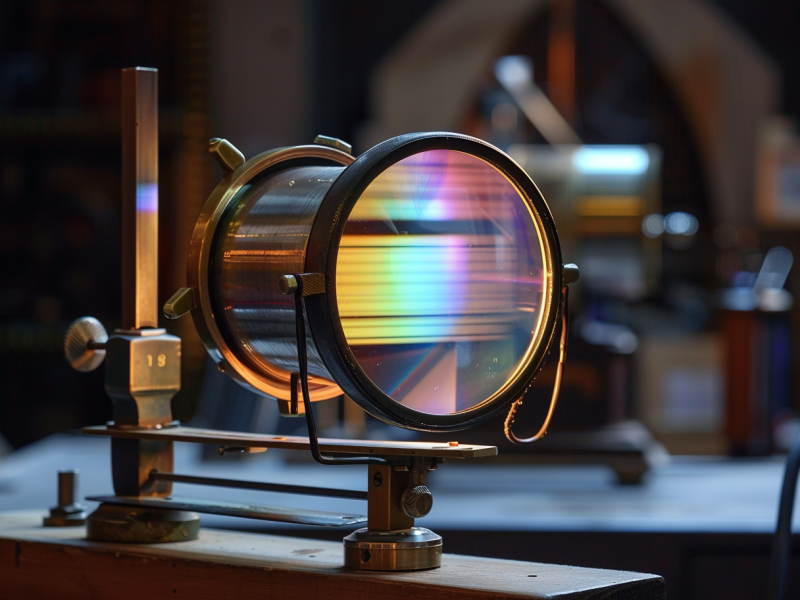
Scandium oxide (Sc2O3) is a rare earth oxide that possesses unique optical and thermal properties, making it highly useful in a wide range of applications. Its high refractive index is one of the key factors that contributes to its importance, especially in the field of optics and photonics. By understanding how scandium oxide interacts with light, researchers and industries can harness its full potential in advanced technologies.
In this article, we will explore scandium oxide’s refractive index, its significant properties, and the various industries that rely on it. Whether you’re involved in research, industry, or simply curious about advanced materials, this guide offers insights into the critical role that scandium oxide plays.
What is Refractive Index?
The refractive index, represented by n, measures how much light bends when passing through a material. It is calculated by comparing the speed of light in a vacuum to the speed of light within the material. Materials with higher refractive indices bend light more and slow it down significantly, which is essential in optical applications like lenses and coatings.
The refractive index is a fundamental property in the design of optical devices. Scientists typically measure it using techniques such as:
- Refractometry: Measuring the angle of light as it bends through the material.
- Ellipsometry: Analyzing changes in the polarization of light reflected off a surface.
- Interferometry: Assessing the phase shift of light as it passes through the material.
Properties of Scandium Oxide
Scandium oxide (Sc2O3) is a stable compound with a high melting point, excellent resistance to corrosion, and strong optical characteristics. These properties make it useful in several high-tech applications, especially those requiring durability and thermal stability. Key properties include:
- Chemical Formula: Sc2O3
- Appearance: White crystalline powder
- Melting Point: 2,405°C (4,361°F)
- Density: 3.86 g/cm³
- Crystal Structure: Cubic
Scandium Oxide’s Refractive Index
The refractive index of scandium oxide is approximately 1.95 at a wavelength of 550 nm, which places it among materials that significantly alter light paths. This high refractive index makes scandium oxide valuable for optical systems where controlling light is crucial. Its ability to slow down and bend light efficiently enhances the performance of optical devices in industries such as telecommunications, electronics, and photonics.
Comparison with Other Optical Materials
Scandium oxide’s refractive index is relatively high compared to other materials commonly used in optical applications:
- Aluminum Oxide (Al2O3): Refractive index ~1.76
- Zinc Oxide (ZnO): Refractive index ~2.0
- Silicon Dioxide (SiO2): Refractive index ~1.46
With a refractive index higher than aluminum oxide but close to zinc oxide, scandium oxide is well-suited for applications that require precise light manipulation. This characteristic positions it as an ideal material for a variety of optical technologies.
Key Applications of Scandium Oxide
Thanks to its high refractive index and thermal stability, scandium oxide is widely used across several industries. Below are some areas where scandium oxide has significant applications:
1. Optical Coatings
Scandium oxide is commonly used to produce anti-reflective and reflective coatings. Its high refractive index allows for effective control of light, reducing losses and improving the efficiency of optical systems. These coatings are applied in devices such as cameras, eyeglasses, and scientific instruments.
2. Photonic Devices and Waveguides
Scandium oxide’s ability to precisely guide light makes it essential for photonic devices and waveguides. These components are critical in telecommunications, where light must be directed with high accuracy to facilitate data transfer.
3. High-Temperature Optical Systems
With its high melting point and thermal stability, scandium oxide is often used in optical components exposed to extreme temperatures. It is particularly valuable in aerospace, defense optics, and industrial lasers, where components must maintain their performance under harsh conditions.
4. Laser Technology
Scandium oxide serves as a host material in solid-state lasers, supporting high-efficiency energy transfer. These lasers are used in a wide range of applications, including medical devices, industrial cutting, and scientific research.
5. Advanced Ceramics
Scandium oxide is also a key ingredient in advanced ceramics, providing durability and precise optical properties. These ceramics are used in electronics, aerospace, and defense applications, where both thermal resistance and optical clarity are required.
Performance in High-Temperature Environments
In the article “Top 10 Sputtering Target Materials that Can Withstand High Temperatures,” scandium oxide is recognized for its ability to perform reliably at elevated temperatures. Its combination of thermal stability and refractive index makes it suitable for demanding optical applications that other materials, such as aluminum oxide or silicon dioxide, may not withstand.
Scandium oxide excels in environments where both heat resistance and light manipulation are critical. While materials like aluminum oxide and zinc oxide are effective in specific applications, scandium oxide’s balance of high temperature tolerance and refractive index ensures it remains an excellent choice for advanced optical systems.
Conclusion
Scandium oxide (Sc2O3) is an outstanding material for high-tech optical applications. With a refractive index of approximately 1.95, it plays a pivotal role in industries that require precise control of light, from optical coatings and waveguides to lasers and high-temperature optical components. Its ability to maintain performance under extreme heat, coupled with its corrosion resistance, makes it a reliable choice for industries like aerospace, telecommunications, and defense.
Further reading: How to Choose Scandium Oxide Powder for Your Project?
